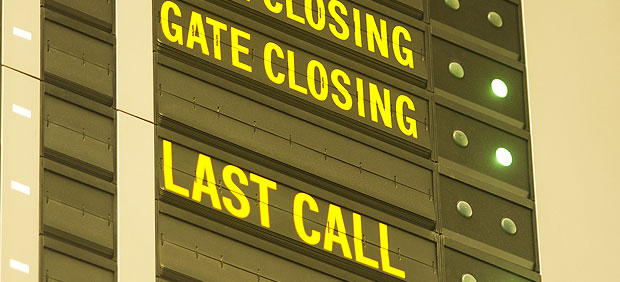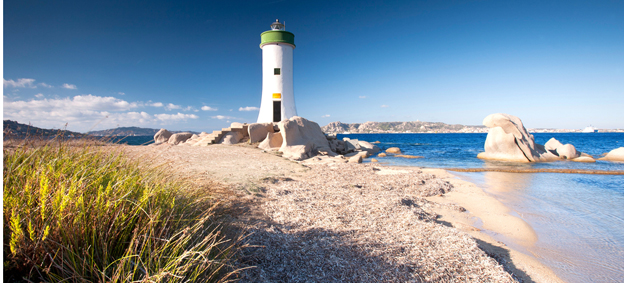
FOLLOW Fareboom
March of the Mamuthones: Sardinia, Folklore and Time Travel
By Deneice Arthurton, Wed, Jul 16, 2014Tonight, for the first time in my life I have been lassoed, in public, by a (slightly scary) man wearing a mask. My Italian friends tell me this is lucky – a good omen for health and fertility. Aged almost 50 I'm not too fussed about the fertility part but a serving of good health is always welcome. And if that includes an energy boost I think I'll take that now please because I am suffering from a bout of festival fatigue.
This is Sardinia – where the excellent food and wine flows freely and, during summer, carnival follows fiesta follows carnival in an unbroken current on which I've been happily, but at times, involuntarily, carried along. I have witnessed and participated in a colourful tapestry of folklore, religion, food, drink, dancing, music and procession.
The alcohol levels in my blood have risen as my energy levels have sunk in equal but opposite proportions. I had thought I might give this fiesta a miss...... but my Italian friends were having none of it. You may consider yourself a Sardinian festival veteran now, they told me, but you can't quit until you've done the Mamuthones; a heavily costumed procession originating from tiny Mamoiada in central Sardinia, steeped in ancient tradition and apparently, if my friends are to believed, not to be missed.

So, here I am, standing in a street lined with people in the island's north-west corner – Golfo Aranci - experiencing my first Mamuthones procession of which my lasso-hurling friend is just one integral piece. But he is an Issohadores not a Mamuthones. The Mamuthones wear black, crudely carved, heavy wooden masks and thick black sheep furs which make the figures appear looming and massive. On his back every Mamuthones carries around 30 kg of bronze cow-bells, each fitted with a bone clanger. Every deliberately slow, measured step, taken in formation, is accompanied with an almost imperceptible twist of the shoulders which sets bell against bell and bone against bronze creating a primitive but hypnotising tempo interspersed with measured pauses and total hush.
Guarding and guiding the Mamuthones are the red and white clad Issohadores – the lasso throwers - sporting a look somewhere between matador and military, with totally unreadable faces hidden behind white masks. There are other players in the mix too – some white sheepskin-clad, some with painted horned masks, some with heavy wooden staffs which they thump on the ground; there is even a representation of an ugly old crone who apparently is in charge of destiny. I am mesmerised and so, so wishing I had done a little homework instead of trying to duck out of this. Maybe then I might have some idea of what on Earth is going on.
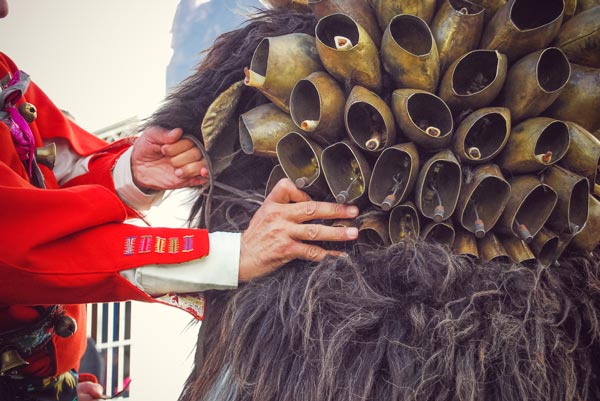
The roots of this fascinating and mystical pageant are so old that no one really knows where it comes from - that it pre-dates Christianity is widely accepted though. Some historians say it represents the shepherds' victory over the invading Saracens; others say it is simply a Pagan ritual in honour of some long-forgotten deity who ruled over the harvest. Whatever else it might be the Mamuthones march retains an overwhelming air of the primordial and, despite the chaos of thrown lassos and horned beasts climbing lamp posts, a deep solemnity wraps itself around a definite sensation of the sacred. Apparently, donning a Mamuthones costume is no light-hearted piece of play acting either - it is a generation to generation inherited solemn duty.
What's more, the mix of tradition, folklore, masks, furs and bones is a little scary. Here, quite possibly, are a whole generation of children who may need trauma therapy! It is explained to me that enduring the Mamuthones parade is something of a rite of passage for Sardinian children whose reactions around me range from the vaguely alarmed to the totally hysterical.
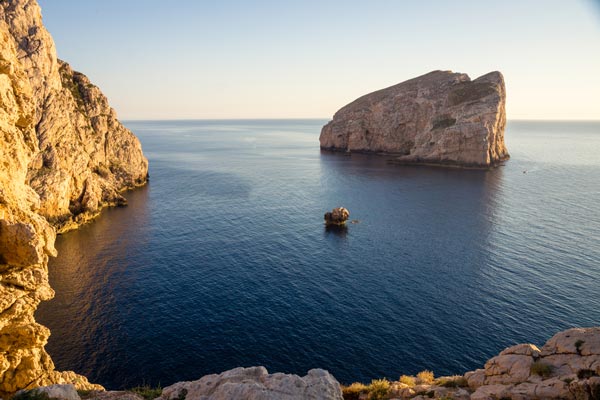
Just two days later I am entrenched in festival high jinks again without even needing to step outside my own north-western Sardinian village home of Martis. This time there's not a clomping, jangling beast in sight. Instead, this postcard perfect village has turned back time and become Martis circa 1800. With a population of less than 700, tiny winding streets where cars struggle to go anyway and a wealth of buildings and homes whose frontages have changed little in centuries, the transformation is easily achieved. Especially once the cobbles are littered with straw, a few donkeys and horses added and the locals dressed up in traditional costumes.
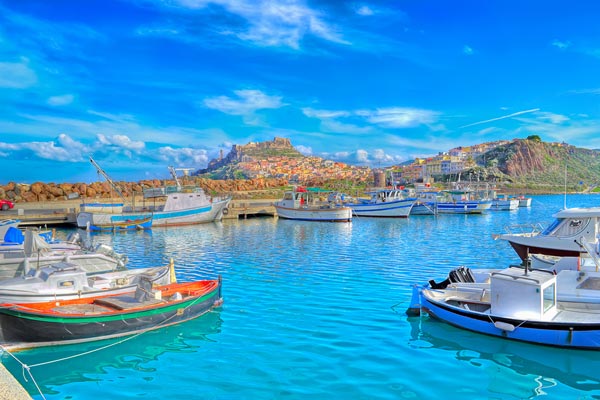
Villagers climb barefoot into tubs to crush grapes, old ladies sit and make pasta shapes with a skilful flick of the thumb and a strange little tool, dancers whirl each other through complicated steps and traditional music played by traditionally dressed musicians bounces off the stone walls of the courtyards. As the warm afternoon progresses I wander cool underground cellars and cave-like rooms in houses where residents have thrown open their doors and laid out some freebie food and drink for all comers.
As the shadows lengthen, Martis's labyrinthine cobbled streets begin to empty and everyone gathers together at long trestle tables to eat snails, pasta, and fresh-baked bread while downing some of the island's excellent but heady red wine. At some point the long Mediterranean day turns into night but I don't remember it happening. Nor am I quite sure at which point I weave my way through the maze of steep little streets to my own front door. Another festival over.
It is now late August - summer is creeping towards autumn and carnival season is winding down – stamina is flagging. Here's to hoping that 'good health' kicks in over winter – I'll raise a glass of Sardinian red to that.
Do you like being the first to know?
If you enjoy always getting the best tips, deals and insider news before everyone else then make sure to follow us on Facebook and Twitter.



